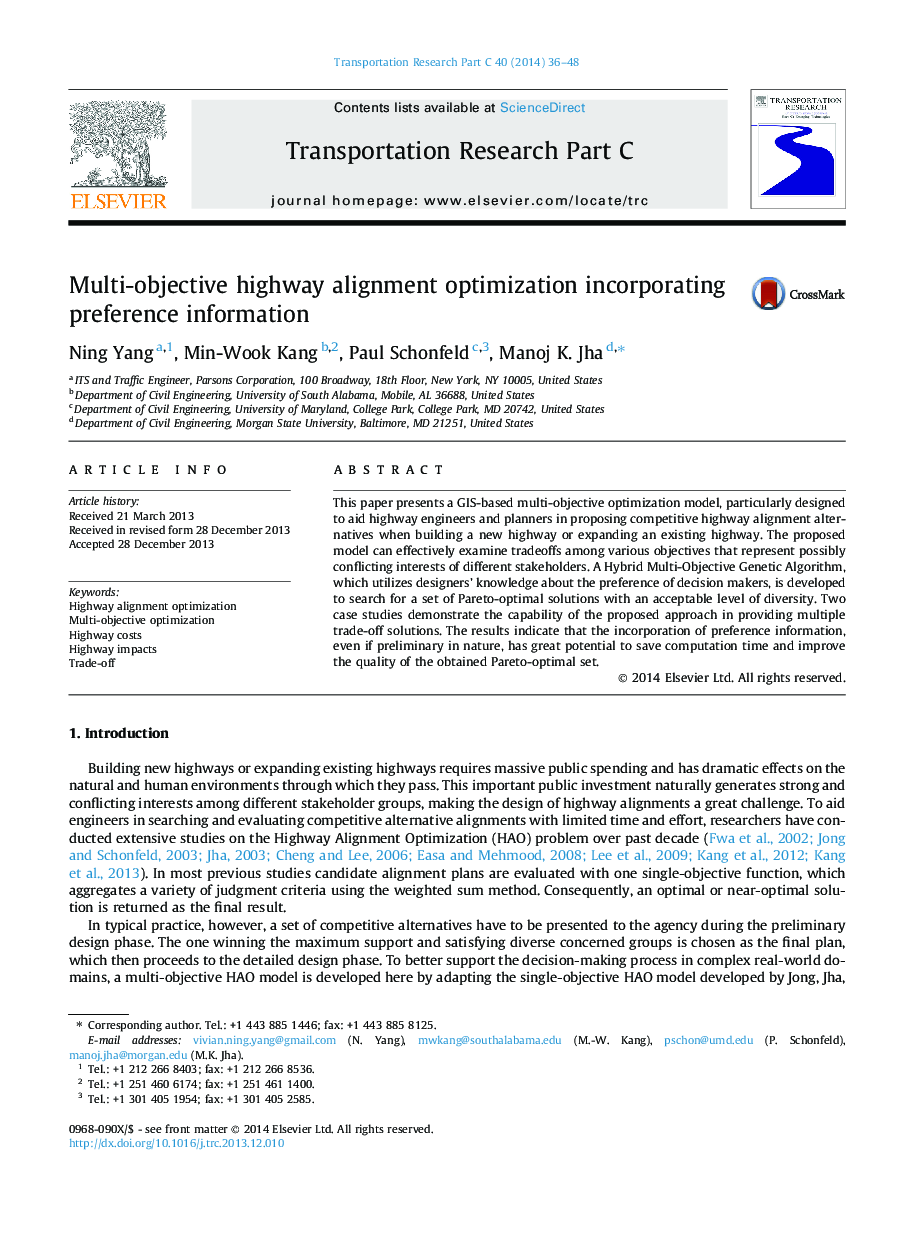| Article ID | Journal | Published Year | Pages | File Type |
|---|---|---|---|---|
| 525268 | Transportation Research Part C: Emerging Technologies | 2014 | 13 Pages |
•Propose a GIS-based multi-objective highway alignment optimization model.•Develop a hybrid Genetic Algorithm combing Pareto ranking and weight aggregation.•Include Pareto set size control to achieve a reasonable level of diversity.•Test proposed model in a hypothetical case study and a real-world application.•Model shows great potential to save computation time and improve solution quality.
This paper presents a GIS-based multi-objective optimization model, particularly designed to aid highway engineers and planners in proposing competitive highway alignment alternatives when building a new highway or expanding an existing highway. The proposed model can effectively examine tradeoffs among various objectives that represent possibly conflicting interests of different stakeholders. A Hybrid Multi-Objective Genetic Algorithm, which utilizes designers’ knowledge about the preference of decision makers, is developed to search for a set of Pareto-optimal solutions with an acceptable level of diversity. Two case studies demonstrate the capability of the proposed approach in providing multiple trade-off solutions. The results indicate that the incorporation of preference information, even if preliminary in nature, has great potential to save computation time and improve the quality of the obtained Pareto-optimal set.
